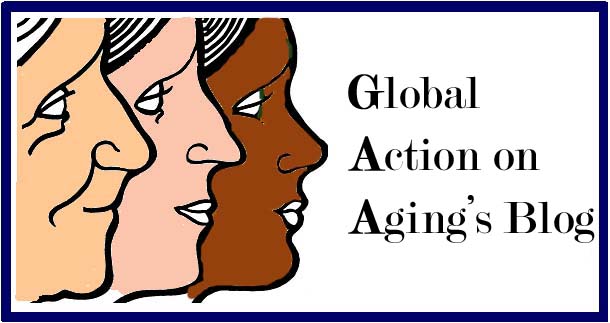Monday, March 4, 2013
How to Prevent Amputation among Diabetic Elders
Global Action on Aging
Chiquita Smith is the most beloved volunteer in our GAA family. Blind due to diabetes, she is a strong advocate for impoverished older persons living in public nursing homes in the New York City area. She led GAA interns on investigative visits to such homes and asked interns to describe what they saw. For example, "Are older persons parked in hallways one behind another in wheehchairs? Is anyone speaking to them? Are they asleep?" She wanted interns to describe the clothing that the older residents were wearing-- "Did it match, top and bottom? Was their bed clean? Did they have any visitors?" And she instructed the young people to inquire of residents if they had had the opportunity to vote in the last public election. GAA interns benefted from her advocacy and helped prepare her "talking points" with the institutions' administrators. If Chiquita did not get satisfactory answers and action from administrators, she wrote to City and State Health officials informing them of the situation. What a role model for the young. . . and a very strong advocate for poor old people.
Today Chiquita is in Beth Israel Hosptial in New York having had two legs amputated due to diabetes. Will you hold her in your thoughts during these difficult days for her? We are posting an article by Laurie Umeh (National Health Service Corps, July 2006) in her honor.
"Preventing Amputation in Older Adults with Diabetes, Proper Foot Care Is No. 1 Strategy
Lower extremity limb loss is a dreaded complication of diabetes at any age. For the older adult, limb amputation often has particularly far-reaching consequences: loss of mobility and independence. Amputation may be the one event that ultimately and prematurely forces someone into nursing home placement. Diabetes mellitus (DM) increases the risk of lower extremity amputation 15-fold.1 Older adults in general are particularly vulnerable; approximately 96% of amputations occur in people older than 45.2 Survival statistics about amputation are bleak. The 5-year survival rate after amputation is only 27%.3For the older adult who has had an amputation, rehabilitation may be limited by cardiovascular disease or other medical conditions. Many older amputees find a prosthetic limb heavy and uncomfortable and lack the stamina to ambulate with it.4 In one study, only 53% of patients older than 65 could be fitted with a prosthetic limb.5The direct and indirect costs of amputations represent a major burden for the health care system. Yet 85% of lower extremity amputations can be prevented through programs for preventing and treating foot ulcers, preventing ulcer recurrence and educating patients about proper foot care.7The cascade of events that ultimately culminates in limb amputation often begins with an innocuous-appearing ulcer on the foot. The mechanism of injury may seem trivial — a wrinkled sock, an improperly trimmed toenail or a foot that swelled in its shoe and led to skin breakdown. A tiny blister or shallow ulceration becomes a draining, infected wound. After months of immobility and heroic efforts to save the ailing limb, osteomyelitis sets in, and amputation often results.As providers of primary health care in clinic and nursing home settings, nurse practitioners are perfectly positioned to champion primary and secondary prevention of diabetic ulcers and lower extremity amputation. The ability to perform foot care has limits in the older person with DM. Understanding the disease process, acquiring a repertoire of effective wound treatments, and knowing when to refer may prevent the progression of injury to ulceration and ulceration to amputation.
Please share this information with your friends, particularly those who suffer from Diabetes.
Susanne Paul for Global Action on Aging
Subscribe to:
Post Comments (Atom)

No comments:
Post a Comment